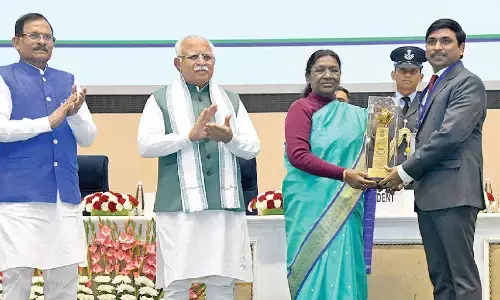AI applied to make complex eye scans easier: Study

Researchers have used artificial intelligence (AI) to develop a more accurate and detailed method for analysing images of the back of the eye, an advance that can help opthalmologists better detect and track eye diseases like glaucoma, and age-related macular degeneration.
Melbourne: Researchers have used artificial intelligence (AI) to develop a more accurate and detailed method for analysing images of the back of the eye, an advance that can help opthalmologists better detect and track eye diseases like glaucoma, and age-related macular degeneration.
In the study, published in the journal Scientific Reports, the researchers looked for a new method of analysing images from a state-of-the-art instrument called the Optical Coherence Tomography (OCT).
The researchers, including those from The Queensland University of Technology (QUT) in Australia, explored a range of machine learning techniques to analyse OCT images. They tried extracting images from two main tissue layers at the back of the eye from the retina and the choroid. OCT, a commonly used by optometrists and ophthalmologists, takes cross-sectional high-resolution images of the eye, showing different tissue layers. These images, the study noted, are of tissues about four microns thick.
To put that in perspective, the human hair is about 100 microns thick, the researchers said. OCT can be used to map and monitor the thickness of the tissue layers in the eye, helping clinicians to detect eye diseases, said David Alonso-Caneiro, lead author of the study from QUT. "The choroid is the area between the retina and the sclera, and it contains the major blood vessels that provide nutrients and oxygen to the eye," Alonso-Caneiro said. The standard imaging processing techniques used with OCT, he added, defined and analysed the retinal tissue layers well, but very few clinical OCT instruments had the software that analysed choroidal tissue.
"So we trained a deep learning network to learn the key features of the images and to accurately and automatically define the boundaries of the choroid and the retina," he said. The researchers collected OCT chorio-retinal eye scans from an 18-month study of 101 children with good vision and healthy eyes.
Using these images, they trained the software to detect patterns and define the choroid boundaries. They compared the results with what they developed with standard image analysis methods and found that the machine learning programme was reliable and more accurate.




















